The New Motorola Moto X (2nd Gen) Review
by Joshua Ho on September 17, 2014 9:00 AM EST- Posted in
- Smartphones
- Motorola
- Android
- Mobile
Display
Without question, the display is one of the most important aspects of a smartphone. Unlike desktops and laptops, smartphones are primarily interacted with through their displays. Unfortunately, it’s hard to evaluate a display by eye as human vision is strongly dependent upon context. In order to control for this aspect, we turn to SpectraCal’s CalMAN 5 with a custom workflow in order to test smartphone displays. At any rate, let’s get into the data.
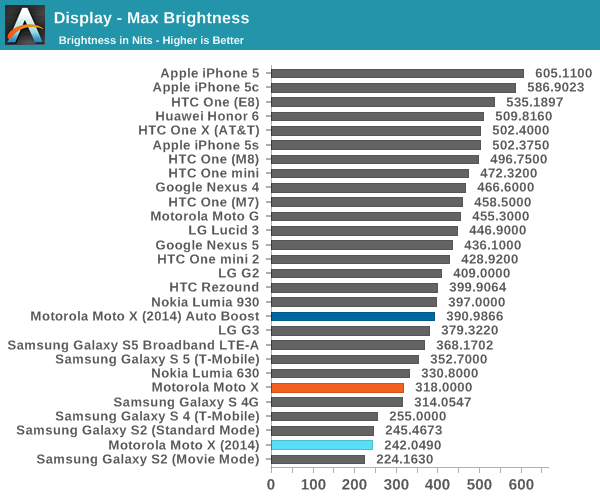
In the basics, the new Moto X is a bit on the low side. While AMOLED has traditionally struggled with luminance in situations such as the web browser and light-themed applications, Samsung’s Galaxy S5 and S5 LTE-A Broadband have shown that it’s possible to achieve levels of brightness approaching some of the brightest RGB-stripe LCDs. As the brightness of the Lumia 930 is about equal to the new Moto X, I suspect we're looking at the Galaxy S4/Note 3 generation of panels. This seems to be backed up by pictures of the subpixel layout seen below as the green subpixels seem to be noticeably larger when compared to the Galaxy S5's panel.
Contrast is still incredible, but I can still see the purple smearing effect that comes from unlit to lit pixels. I’m still unable to get a clear answer on why this is, but it’s likely that capacitance somewhere in the system is causing this issue in the form of RC delay. Whether this is a fixable issue is something I’m not aware of yet. The clear solution would be to set black to the lowest possible brightness a lit pixel can be, but this would make for worse contrast.

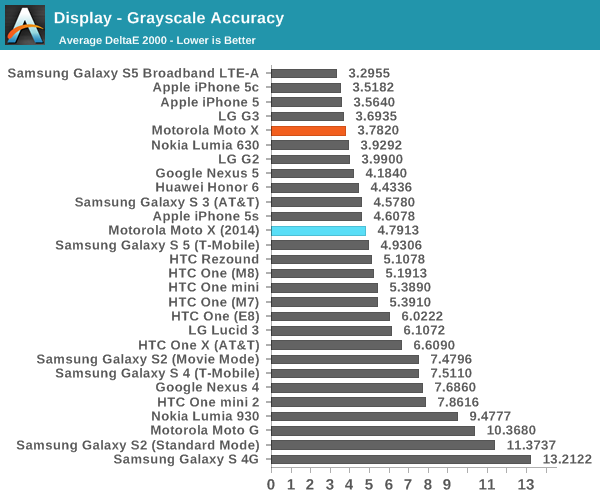
In grayscale, the new Moto X isn’t the best. We see that the display is just a bit too red, and that most of the luminance is coming from red and green. This makes sense from a power and display lifetime perspective though, as blue tends to have the least efficient emitter material in an AMOLED display. However, this translates to poor grayscale performance. The green tint tends to show itself in certain shades of grayscale as well.

In our saturation sweep, the new Moto X continues to be rather poor in its performance. While on Samsung phones it’s normal to see colors like this on the default display mode, there’s usually a mode that correctly constrains the display to sRGB which is the industry standard for displaying colors. There’s no such mode on the new Moto X, so the display significantly overshoots sRGB. This doesn’t bode well for the ColorChecker, which provides the most thorough look at color accuracy.
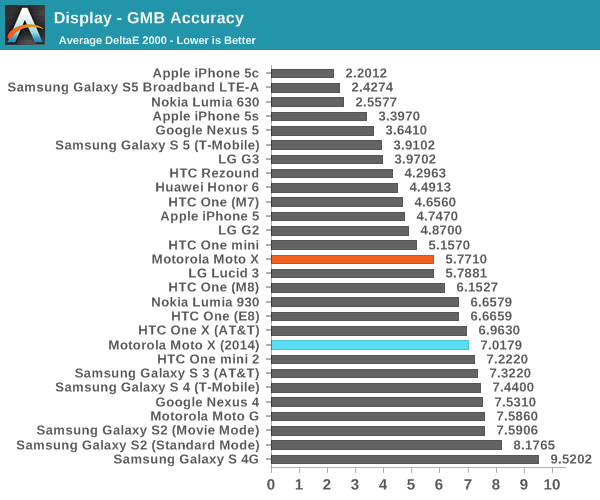
As predicted, the new Moto X does poorly in the ColorChecker. There’s really not much that the Moto X can accurately display in sRGB as just by pushing the gamut too far, even if there wasn’t saturation compression for some colors, the large gamut will cause distortion of all colors within the gamut triangle.
Unfortunately, it’s not clear where this lack of attention to color accuracy comes from. In discussions with Andrei it's clearly possible to calibrate the AMOLED panel from the GS4 quite accurately, and there's no real technical limitation for AMOLED to lack good calibration. However, judging by the relatively low peak brightness there are other issues as this could affect Motorola's performance in battery life tests. This seems to suggest that Motorola is unable to access the latest generation of AMOLED panels from Samsung Display.
This would be a rather startling thought, as it means that no matter what Motorola does to improve their implementation of Samsung’s AMOLED displays, they will always be behind the curve. If it becomes clear that Samsung’s AMOLED is the best display from a user-facing standpoint, every other OEM will face significant barriers in competition as they would be unable to access the latest generation AMOLED panels. The real solution here is for other display manufacturers such as LG, JDI, and AUO Optronics to catch up.
At any rate, the display of the new Moto X seems to be relatively poor compared to what we see in the Galaxy S5 LTE-A (and likely the Note 4), along with the iPhone 5s, Nexus 5, and One (M7). While it’s impossible to ignore the power advantage of AMOLED when implementing functions like Moto Display, the relatively low peak brightness and poor color accuracy are concerning.




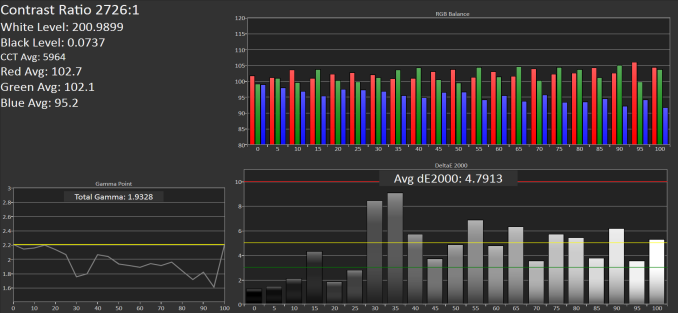

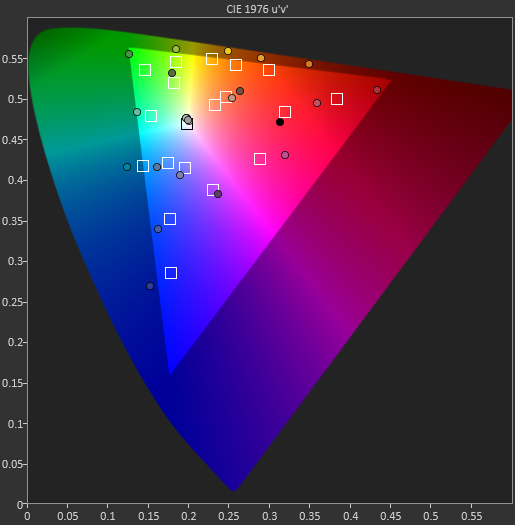








179 Comments
View All Comments
semo - Thursday, September 18, 2014 - link
Anandtech also hate upgraded aftermarket batteries (by giving their support to sealed batteries in phones)jjj - Wednesday, September 17, 2014 - link
Good job at not trying to ignore the negatives or spin them into positives.You should factor in the price in your conclusions even if many might not care about price.
Wishing4more - Wednesday, September 17, 2014 - link
Josh, could you explain Auto-boost? Under what conditions is it activated? Can it be activated manually or only automatically via a minimum ambient light senor reading? Thanks!JoshHo - Wednesday, September 17, 2014 - link
It's activated if auto brightness is on and the reading for the ambient light sensor is high enough.Wishing4more - Thursday, September 18, 2014 - link
Does it significantly improve outdoor visibility? That was one of my biggest issues with the original X.JoshHo - Thursday, September 18, 2014 - link
It should be noticeably better.sjohnam - Wednesday, September 17, 2014 - link
the worst review i have ever read, now spec-sheet days are gone.. I want practical results. Everyone hated the 1st Gen Moto X, but the tweaks motorola did to that everyone became a Fan. I can bet after what motorola did with with S4 dual core processor.. so called X8 computing the new X won't let that reputation down I want a smartphone that is good practically.. not on PAPER. Infact some tasks are accomplished faster on MOTO E than S5. And most importantly first learn how to write a review. It's not essay competition. 10 Pages still.. outcome nothing.pateras - Wednesday, September 17, 2014 - link
"The latter seems to be true all of the time though, as so far with this strategy Motorola has been one of the first to release new Android OS updates."This has certainly not been my experience. 4.4.3 came out in early June, and 4.4.4 two weeks later. My Moto-X never got 4.4.3, and didn't get 4.4.4 until August. This is my first Android, though, so maybe 6 weeks is considered a short wait.
aman.agx - Thursday, September 18, 2014 - link
It depends on which network you are on. Verizon is usually the last to provide the updates. People on at&t or tmobile got it in two weeks.aman.agx - Thursday, September 18, 2014 - link
Also you were still the fastest to get it on your network i bet.